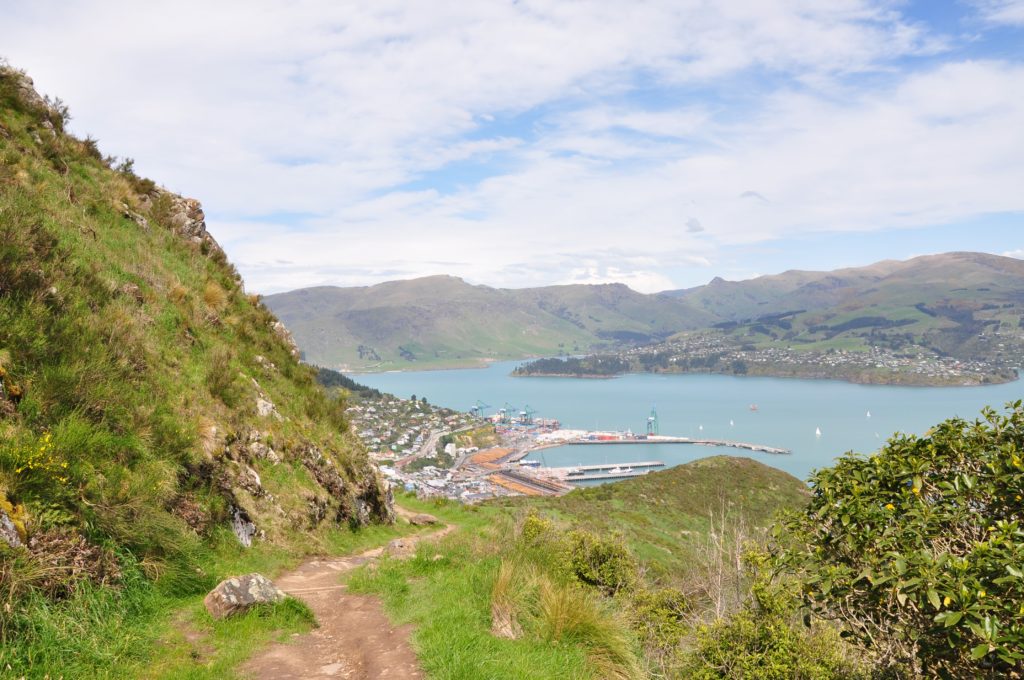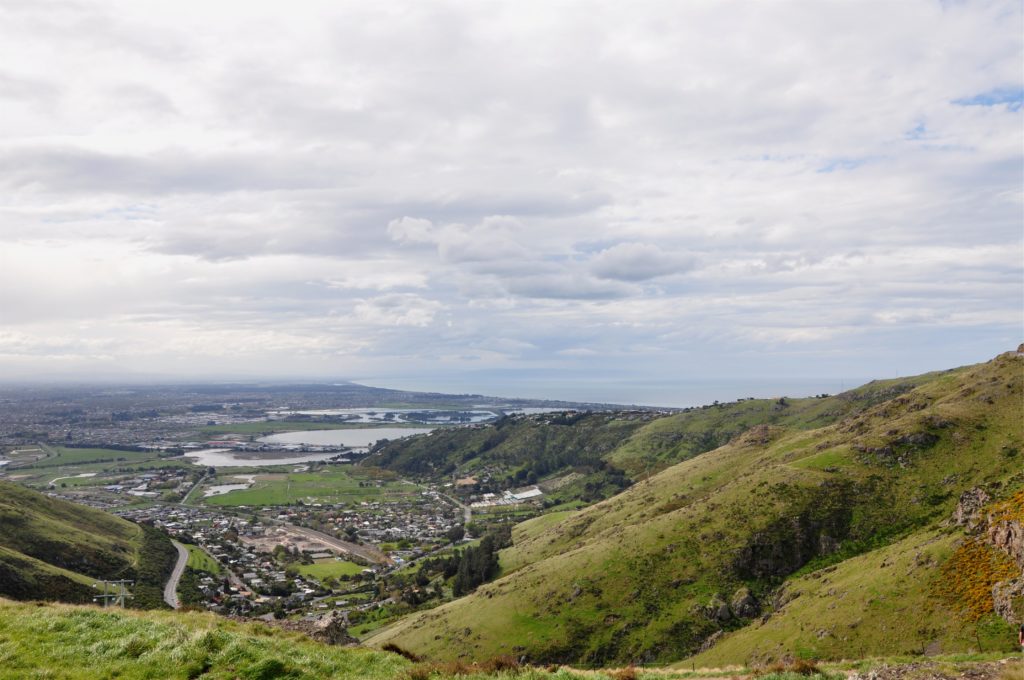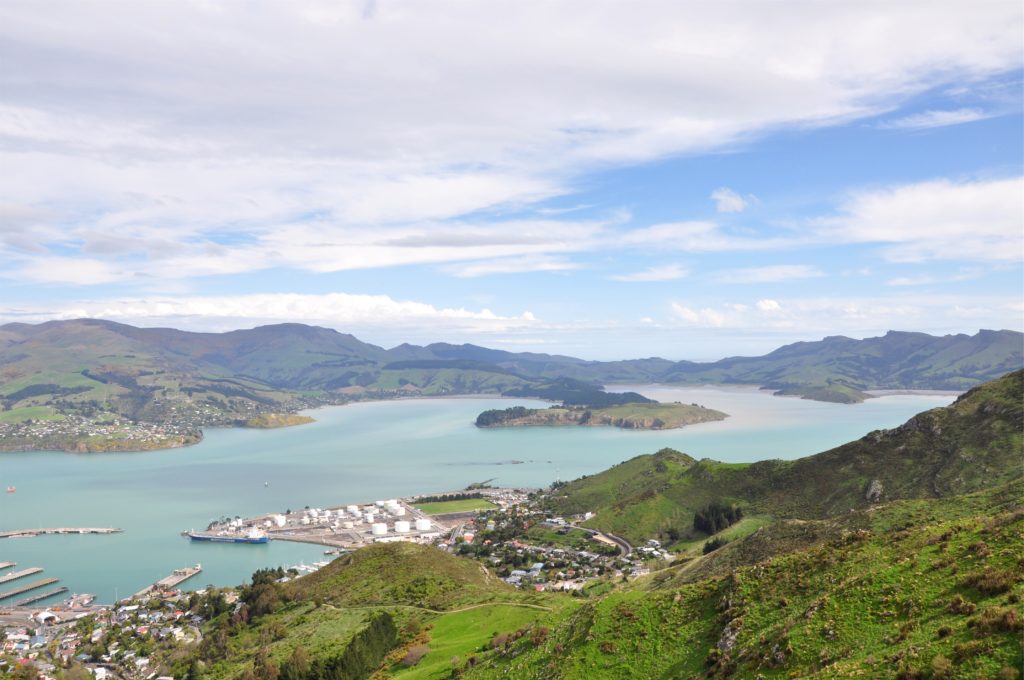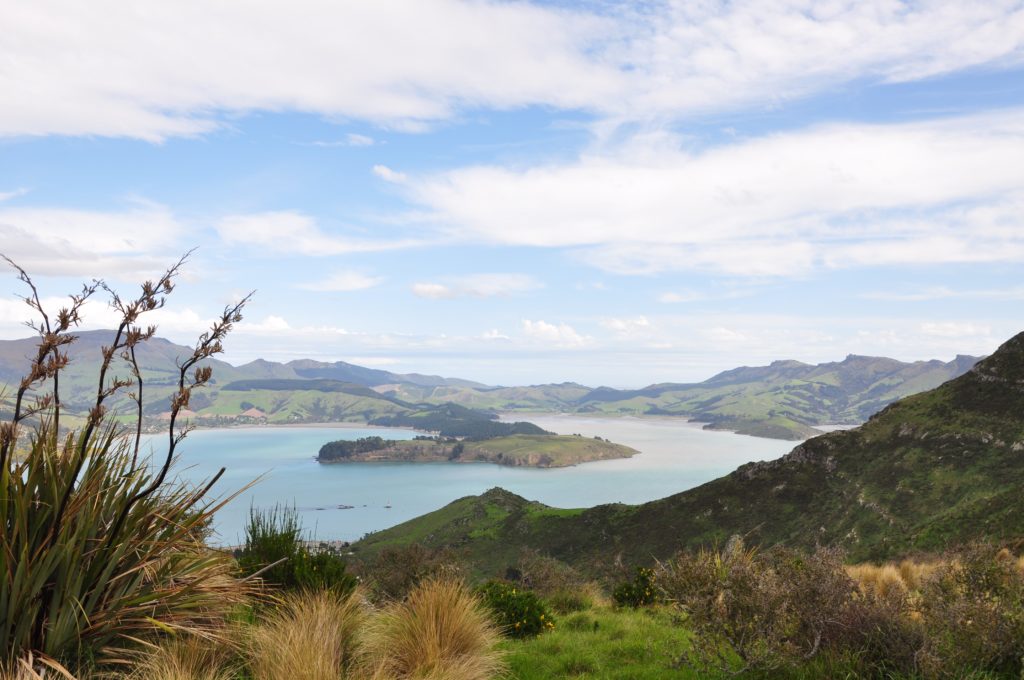When the weather was unexpectedly sunny one Saturday afternoon we decided to get out of the house and explore one of the local tracks. The Bridle Path was constructed in 1850 and was the route used by the early European settlers to get from the port in Lyttleton over the Port Hills to the main settlement of Christchurch.

After winding through the narrow streets of Lyttleton, the track climbs steeply up towards the crater rim. Although some of the historic buildings in Lyttleton were damaged in the earthquakes, much of the town remains and still has the feel of a historic port town. The port itself is very busy and is where our container arrived. As we continued up the steep track we were able to look down at the harbour watching both the commercial boats and the sail boats out in the bay.

The Bridle Path climbs to the top of the volcanic caldera which forms the Port Hills reaching a height of 350 meters (1,150 feet). From the rim we were able to look out across Heathcote Valley towards the city of Christchurch.

For us, enjoying the walk on a sunny afternoon, in our comfy shoes and clothes, it make for a steep but pleasant outing. It was hard to imagine how you would feel about making this trek after having spent three to four months at sea on a boat from England back in the 19th century.

It was interesting to learn that most migrants that left Europe in the 19th century opted for North America. The shorter, cheaper passage across the Atlantic took only about 10 days and cost £4 back in 1850. By comparison, the journey to New Zealand took from 75 to 120 days and cost at least £15. Despite the shorter trip, trans-Atlantic emigrants faced worse conditions and, because the passage to New Zealand was better regulated, greater risks of death by shipwreck or illness.

We walked for a while along the crater rim, watching the cable cars coming up from Heathcote Valley and enjoying the view over towards Governor’s Bay before retracing our steps back down the steep path into Lyttleton.
